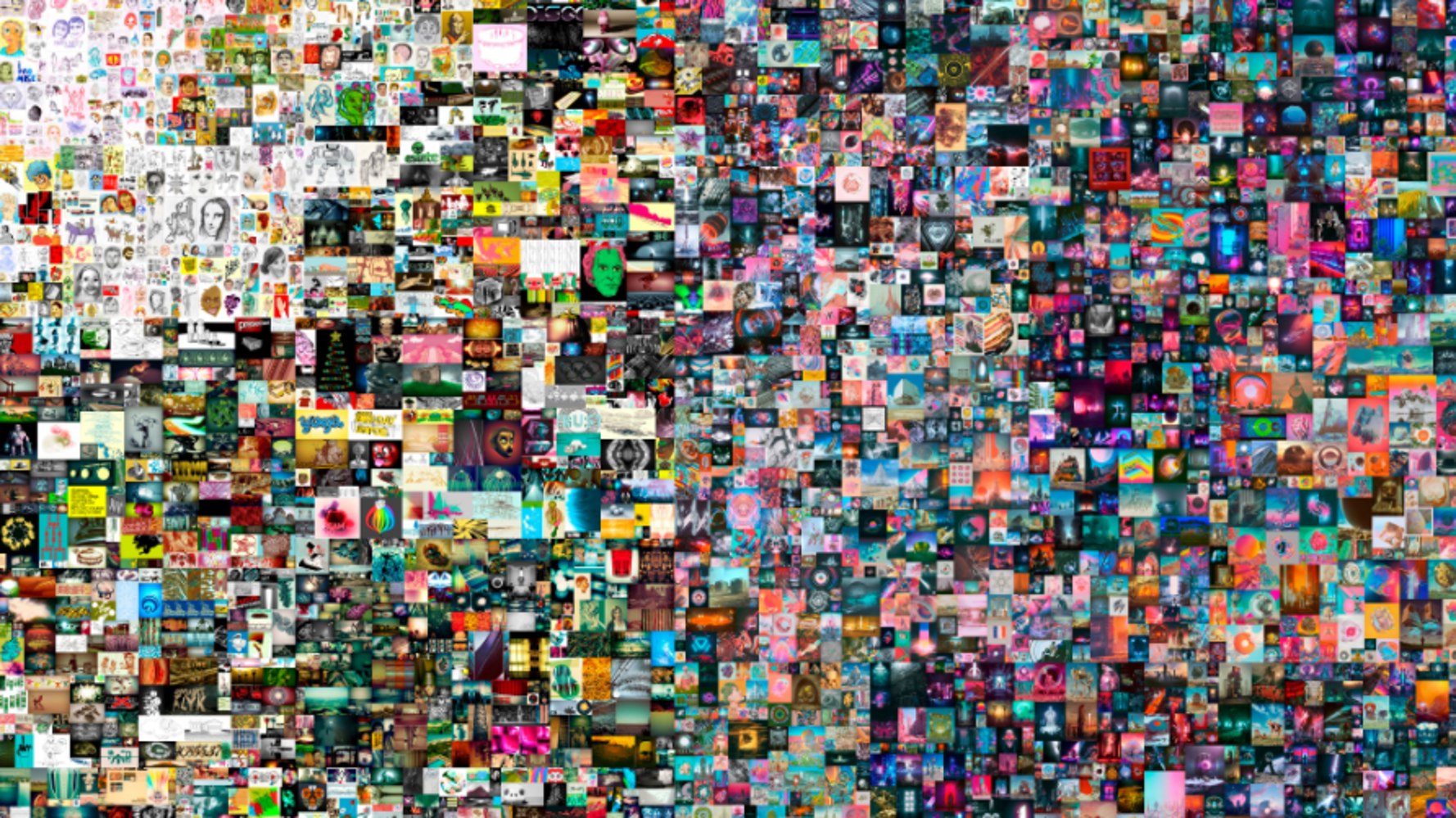LONDON (AP) – A piece of digital art, tuned with cryptocurrency technology to make it unique, sold at auction this week for nearly $ 70 million. This transaction made global headlines and boosted the already growing interest in these types of digital objects – known as non-fungible tokens, or NFTs – that caught the attention of artists and collectors.
In the jargon of the economy, a fungible token is an asset that can be exchanged on a one-to-one basis. Think of dollars or bitcoins – each has exactly the same value and can be traded freely. A non-fungible object, on the contrary, has its own distinct value, like an old house or a classic car.
Cross this notion with the cryptocurrency technology known as blockchain and you will have NFTs. These are effectively digital certificates of authenticity that can be attached to digital art or, well, just about anything else that comes in digital form – audio files, video clips, animated stickers, this article you are reading.
NFTs confirm ownership of an item by recording the details in a digital ledger known as a blockchain, which is public and stored on computers on the Internet, making it effectively impossible to lose or destroy.
At the moment, these tokens are on the rise in the collection world, where they are being used to solve a central problem for digital collectibles: how to claim ownership of something that can be easily and infinitely duplicated.
I STILL DO NOT UNDERSTAND. CAN NO ONE JUST COPY DIGITAL MATERIAL FROM THE INTERNET?
Of course, anyone can download a copy of Beeple art from their social media feed, print it out and hang it on the wall. Just like you can take a picture of the Mona Lisa at the Louvre or buy a print at the museum’s gift shop. But that does not mean that you own these original works of art.
One of the goals of NFTs is that they can be used to track an object’s digital provenance, allowing a select group to prove ownership. In a broader scenario, it is a way of creating scarcity – albeit artificial – so that you can sell something at higher prices thanks to its scarcity.
“All the time, money and effort you spend on your digital life, you can create value for it,” said Chicago fund manager Andrew Steinwold, who started an NFT fund in 2019. “You have ownership rights in physical world. Why don’t we have property rights in the digital world? “
Some NFT issuers grant full copyright to the buyer, while others do not.
Beeple is an American digital artist living in South Carolina, whose real name is Mike Winkelmann. He has been creating digital sketches using 3D tools daily for the past 13 years. The auction house Christie’s calls his work “abstract, fantastic, grotesque or absurd”. He has 1.9 million followers on Instagram.
In December, the first extensive auction of his art yielded $ 3.5 million, an attractive amount that was surpassed by this week’s record sale of his collage “Every day: the first 5,000 days” for almost $ 70 million, paid in a digital currency known as Ethereum.
THEN WHO ELSE IS SELLING NFTs?
William Shatner, famous for “Star Trek”, sold 90,000 virtual business letters last year for $ 1 each. Electronic musician Grimes sold $ 6 million in her digital art last month, including a video clip of winged cherubs floating in dreamlike pastels that went for $ 389,000. Clips of NBA star LeBron James dunking are selling for up to $ 225,000. Actress Lindsey Lohan sold an image of her face. You can also buy virtual lands in video games and meme characters like Nyan Cat.
Digital artist Anne Spalter started out as an NFT skeptic, but has now sold several works of art using tokens. The most recent was a video called “Dark Castles” – of mysteriously distorted castles generated by artificial intelligence technology – sold for $ 2,752.
“The NFTs opened up art to a lot of people who would never have gone to a gallery in New York,” said Spalter, who pioneered digital fine arts courses at Brown University and the Rhode Island School of Design in the 1990s. “They are investors, they are technology entrepreneurs, they are in that world.”
BUT WHO WOULD SPEND $ 70 MILLION IN ONE?
Christie’s identified the buyer of Beeple’s work on Friday as the financier of a digital art fund that goes by the alias Metakovan, an ad that may fuel concerns about a bubble in the cryptocurrency art market. The buyer founded Metapurse, described as the largest NFT fund in the world, which is likely to benefit from increased attention.
The British auction house said the purchase makes Beeple’s piece the third most valuable piece of art ever sold by a living artist, behind works by Jeff Koons and David Hockney.
Spalter said he expects this bubble to burst, although she still believes NFTs are a promise for artists as a way to reduce fraud and mis-assignment of works.
“I am still baffled by the prices and how high they are,” she said. “I think there will be a correction.”
I appeal to all HuffPost superfans!
Sign up as a member to become a founding member and help shape the next chapter of HuffPost
